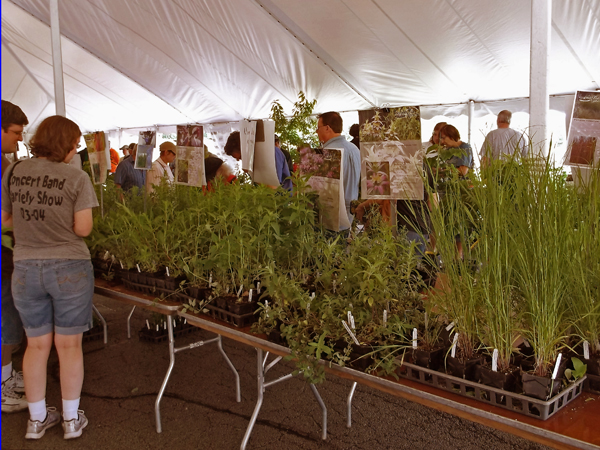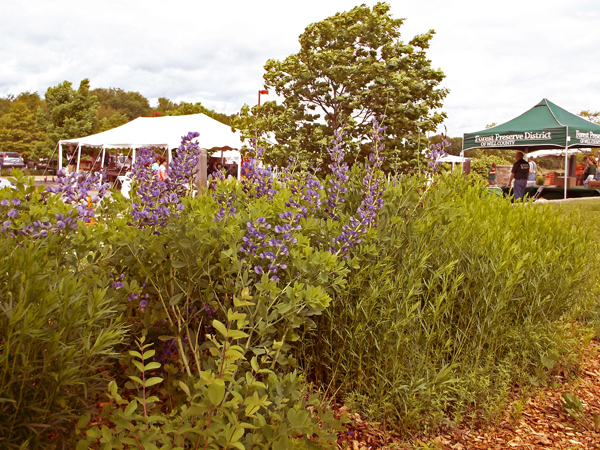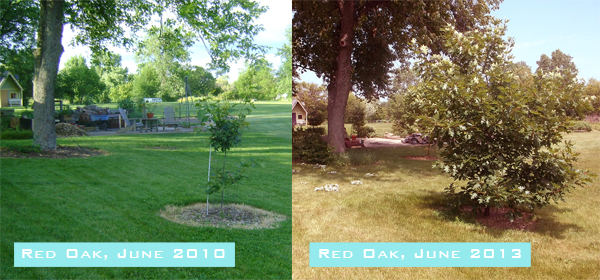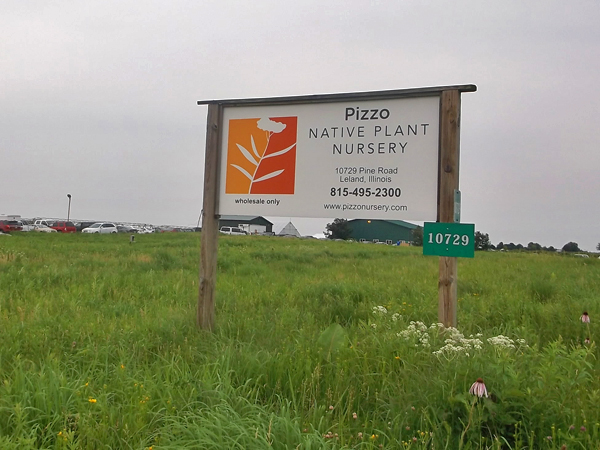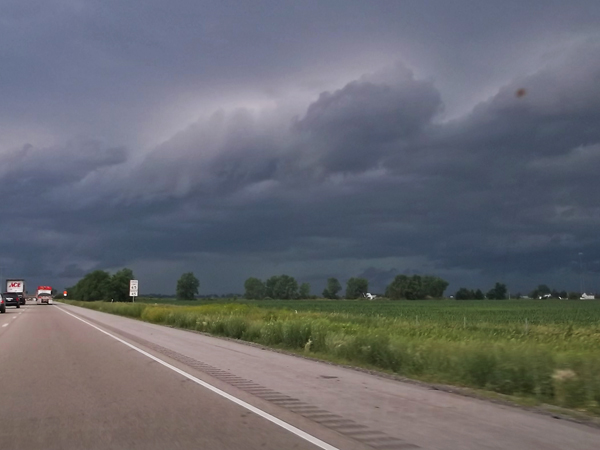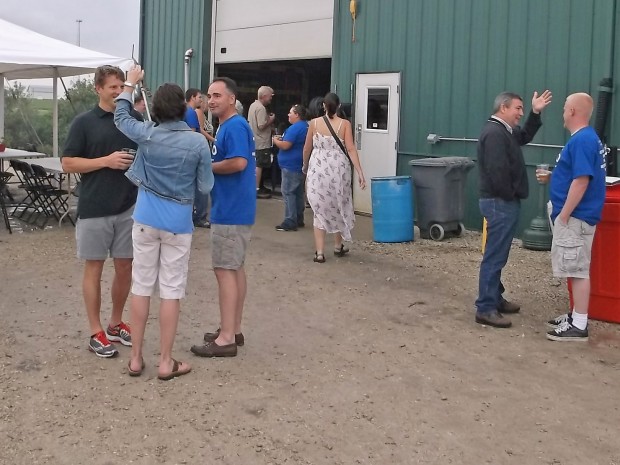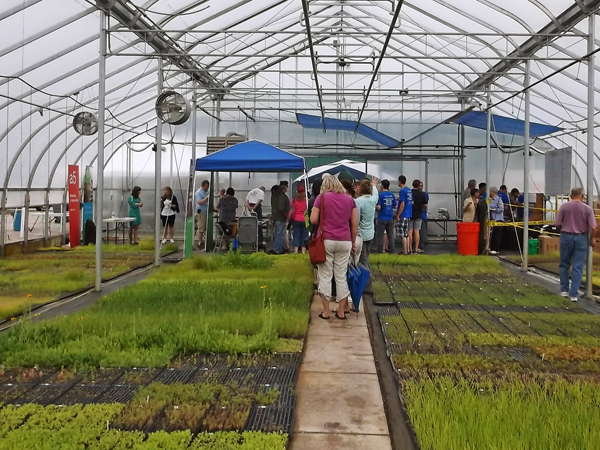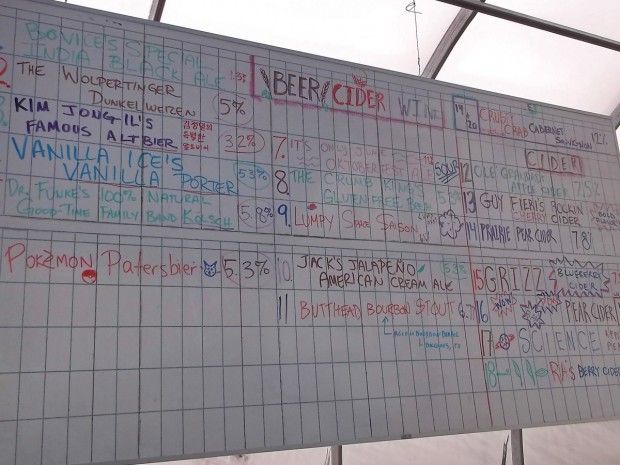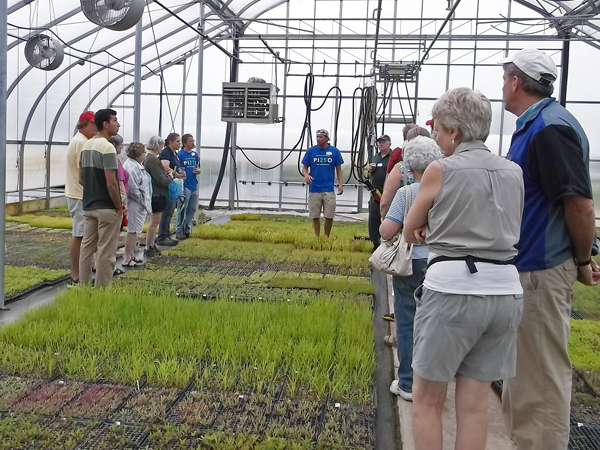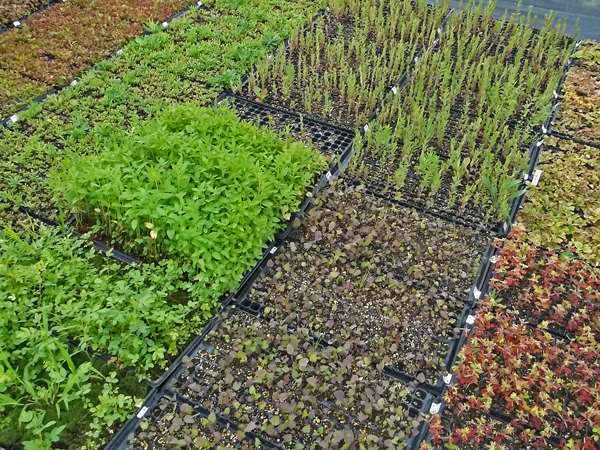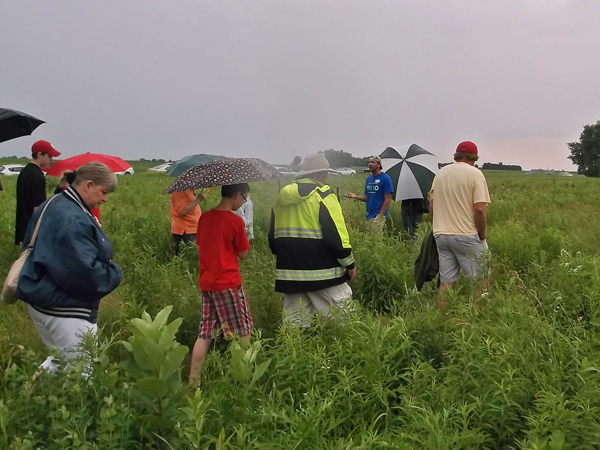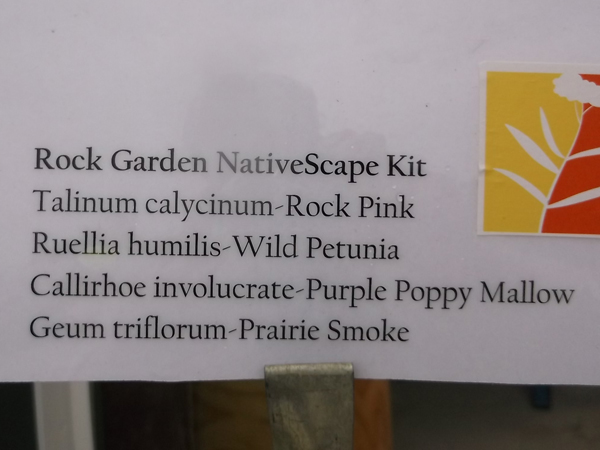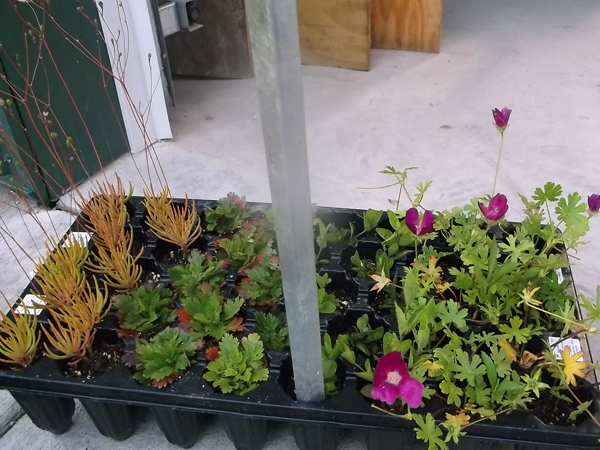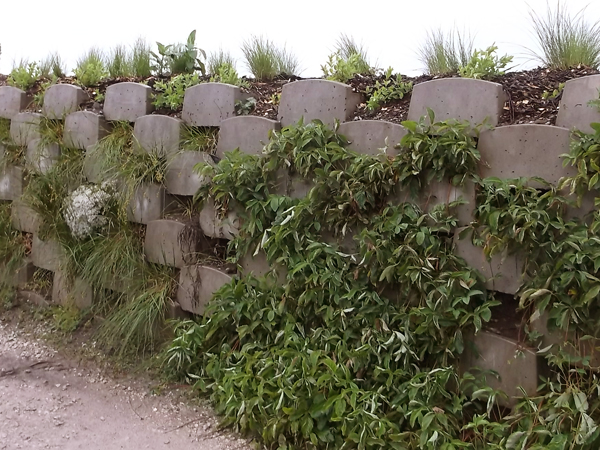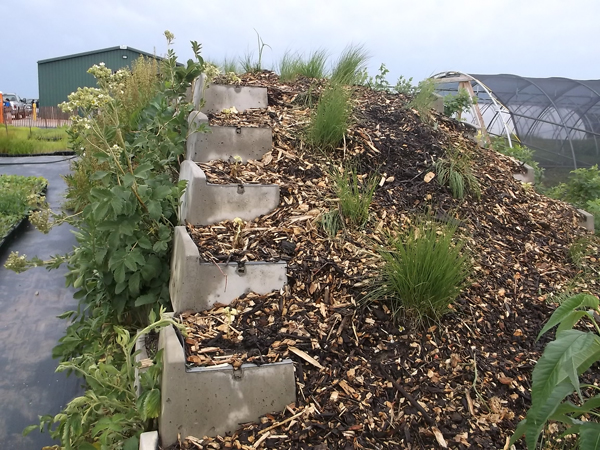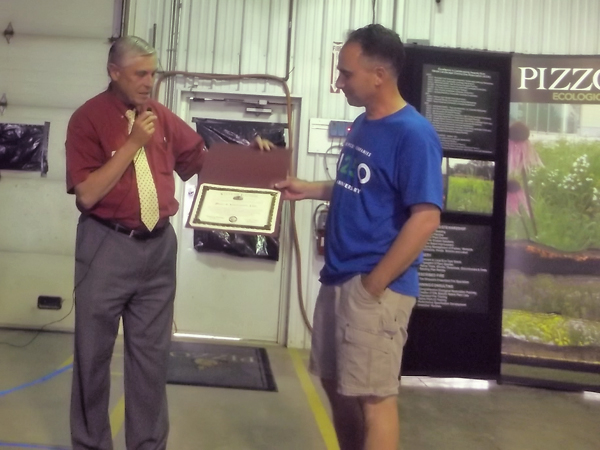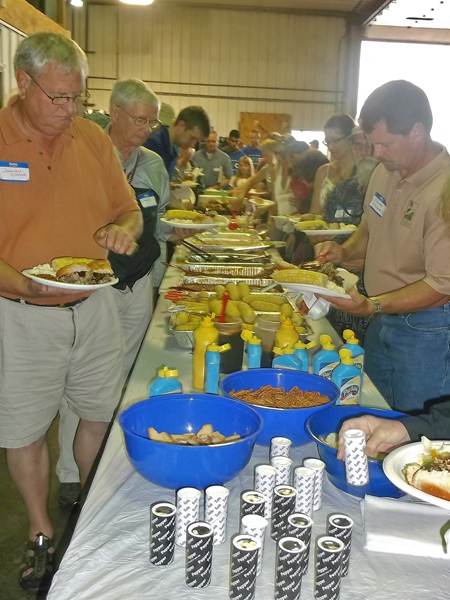With all the rain and warm weather this week, the plants in the home landscape are doing well! Lots of flowers on the native plants throughout my yard, from the backyard meadow, to the front yard prairie garden. View the slideshow below to see some of the garden worthy wildflowers in bloom this week:
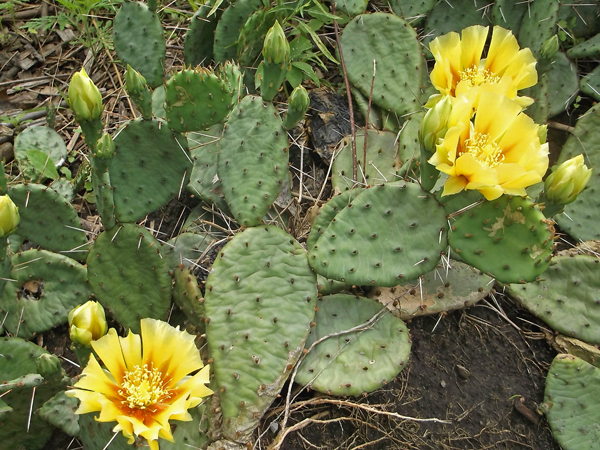
Plains Prickly Pear Cactus (Opuntia macrorhiza)
One of two Prickly Pear Cactus found in the Midwest - the other being the so called Eastern Prickly Pear (O. humifusa). Swink & Wilhelm mention in their book "Plants of the Chicago Region" that Plains Prickly Pear has many more long spines and is a key way of differentiating it from it's cousin.
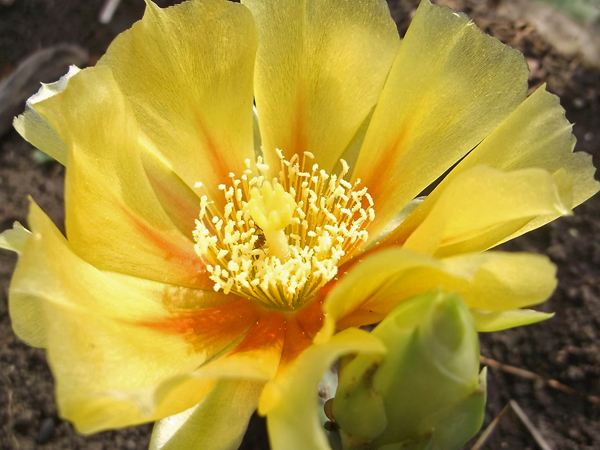
Prickly Pear Cactus (Opuntia macrorhiza)
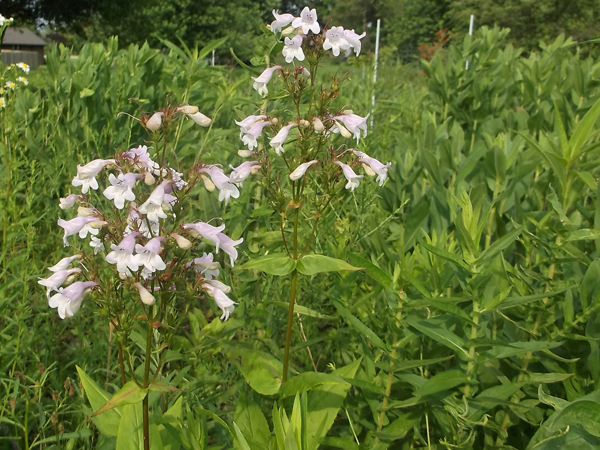
Foxglove Beard Tongue (Penstemon digitalis)
Lovely in bloom, hummingbirds will visit the tubular flowers.
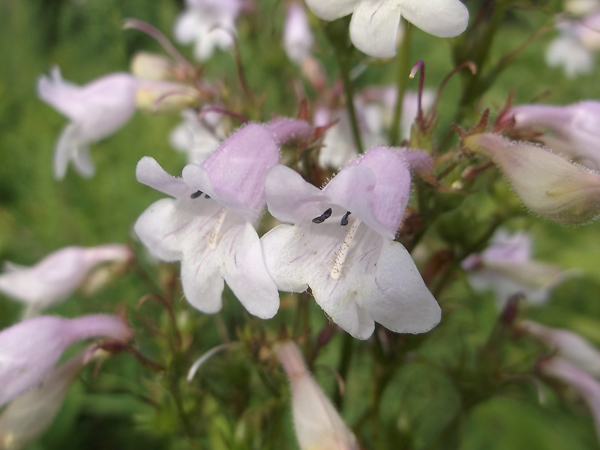
Foxglove Beard Tongue (Penstemon digitalis)
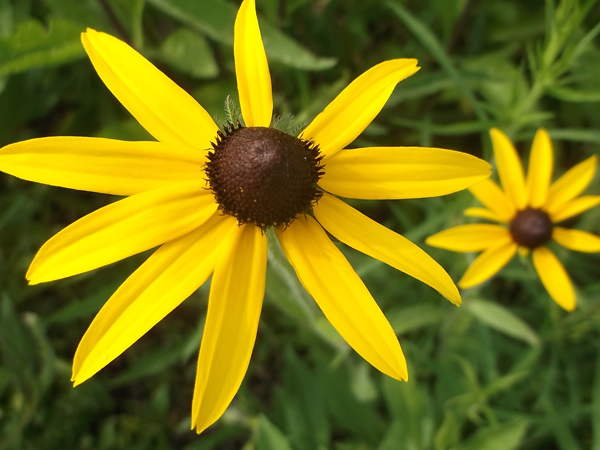
Black-Eyed-Susan (Rudbeckia hirta)
Can bloom from seed the first season. A short lived perennial. Very showy for several weeks.
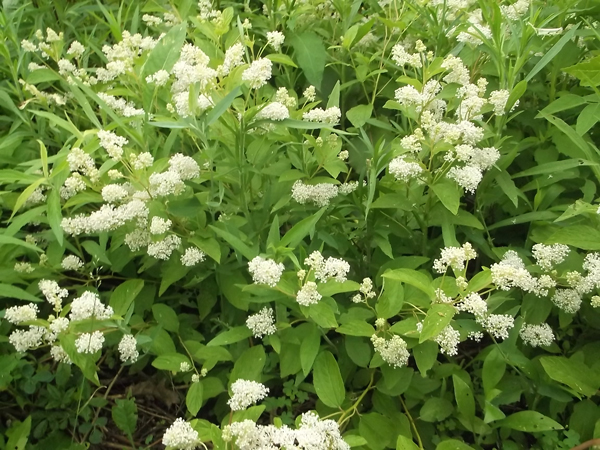
New Jersey Tea (Ceanothus americanus)
New Jersey Tea growing in the prairie meadow. Hummingbirds come to feed on the small pollinating insects found on this native shrub.
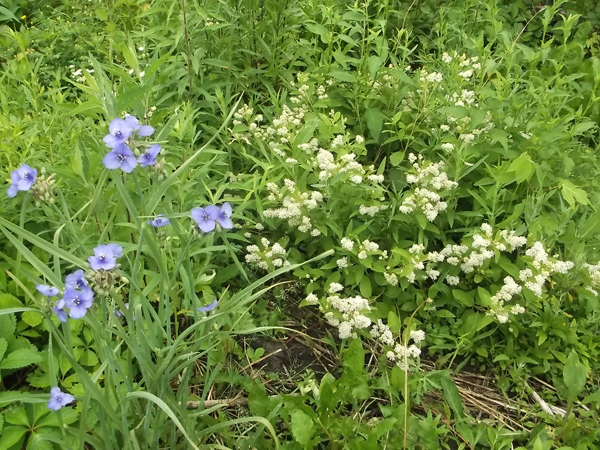
New Jersey Tea with Spiderwort (Tradescantia ohiensis)
A nice combination of blue and white. The addition of some Switchgrass, especially a silver leaved variety, such as 'Northwind', in the background, would make for a nice garden combination.
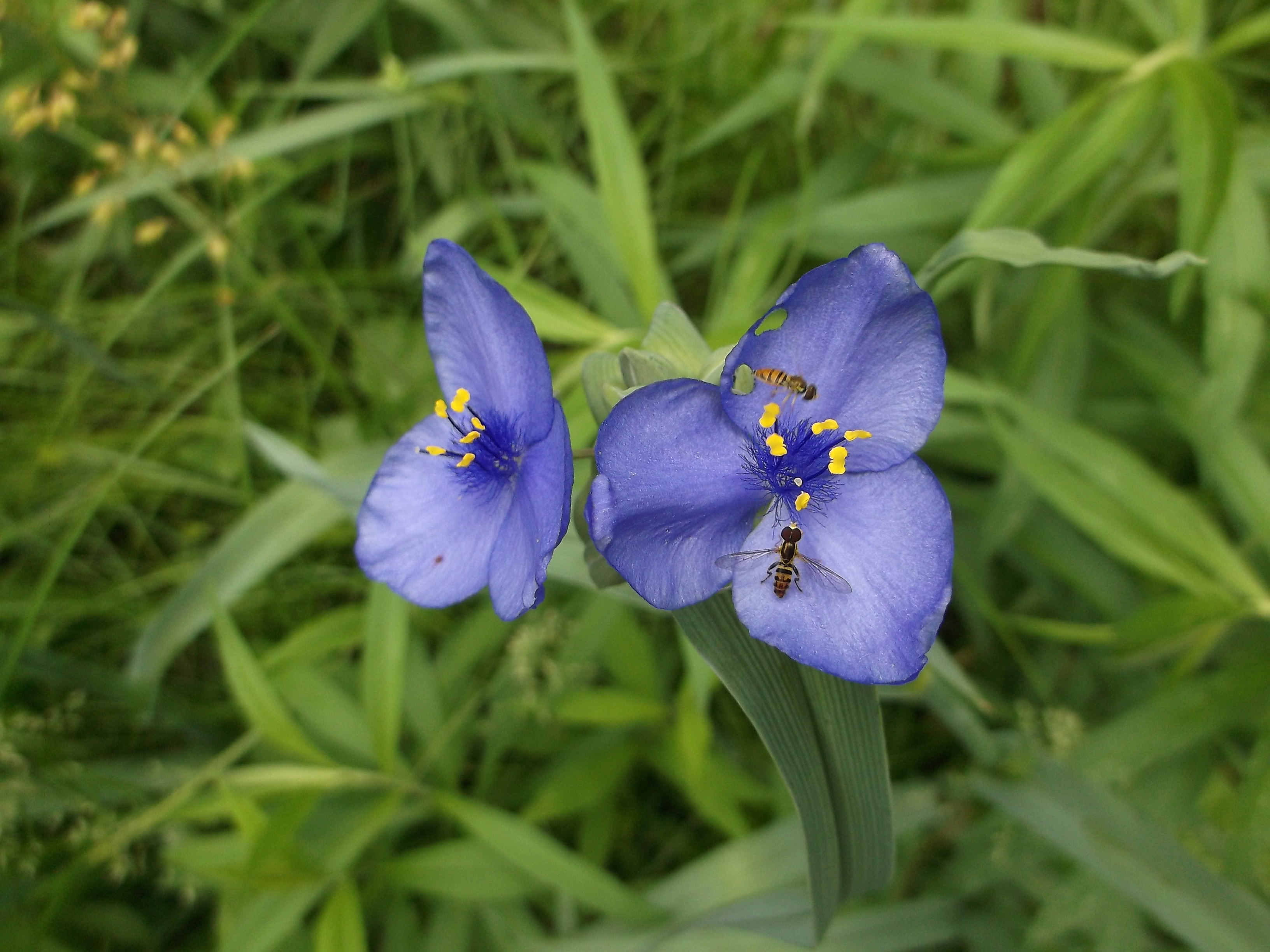
Spiderwort (Tradescantia ohiensis)
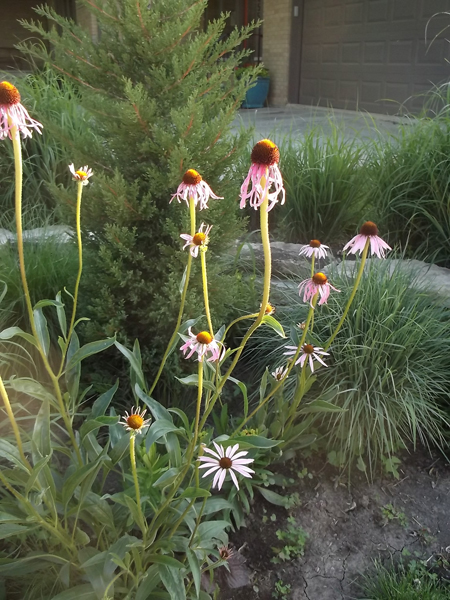
Pale Purple Coneflower (Echinacea pallida)
Less bushy in its growth than its more commonly grown cousin, Purple Coneflower (E. purpurea) - making it less of a bully and allowing other plants to grow under its flower stems.
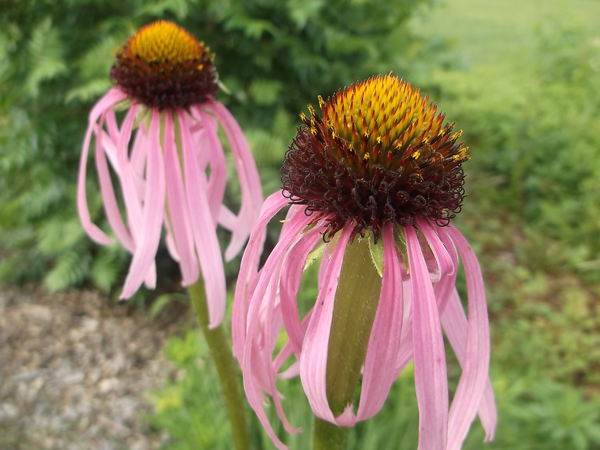
Pale Purple Coneflower (Echinacea pallida)
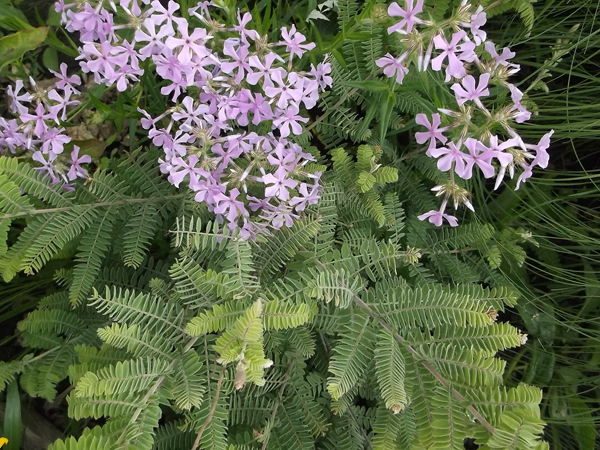
Prairie Phox (P. pilosa) with Leadplant (Amorpha canescens)
The silver gray leaves of the Leadplant complement the lavender purple of the Prairie Phlox. A week after the phlox is finished blooming, the Leadplant with show off its deep purple blooms.
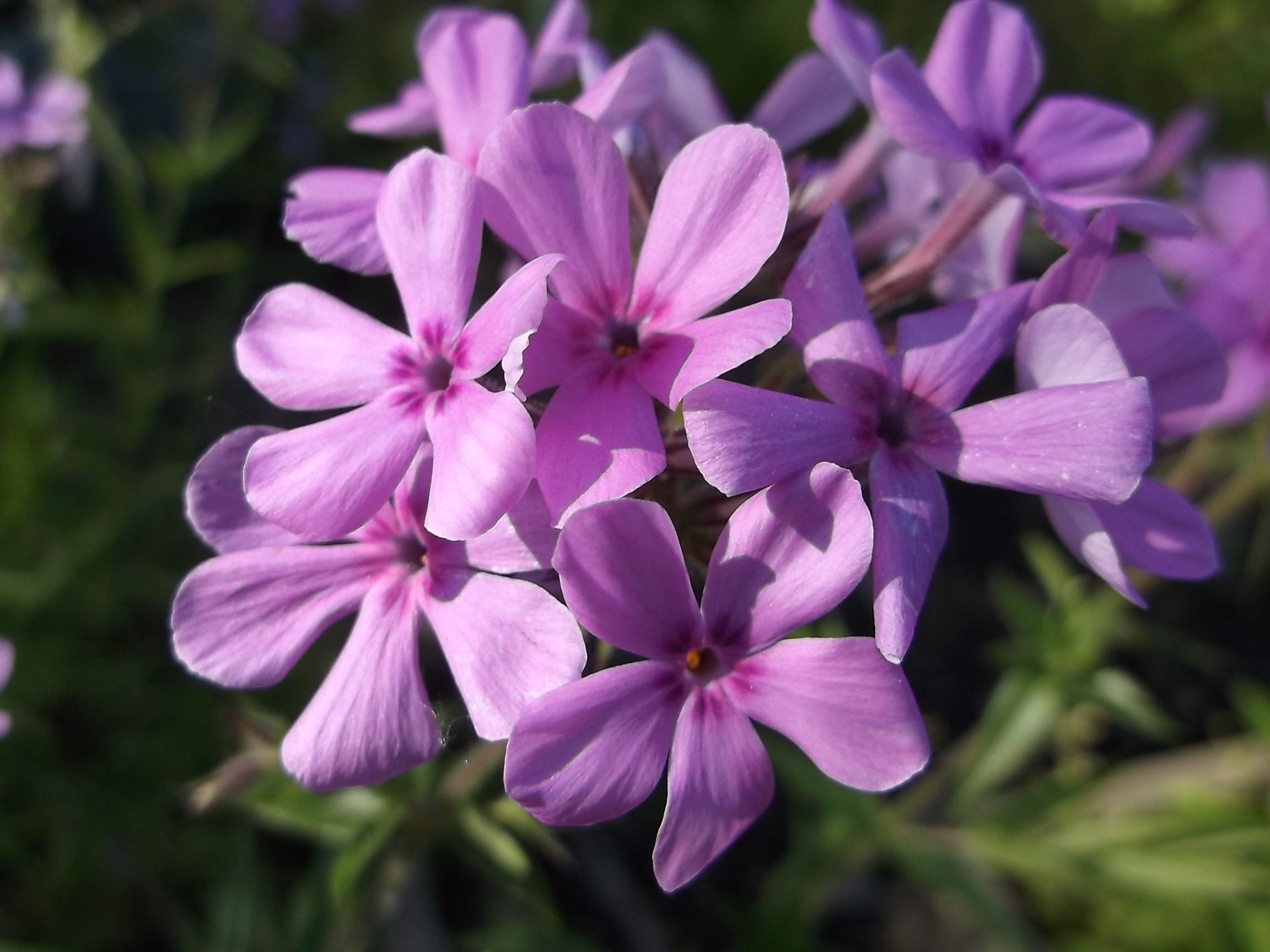
Prairie Phlox (P. pilosa)
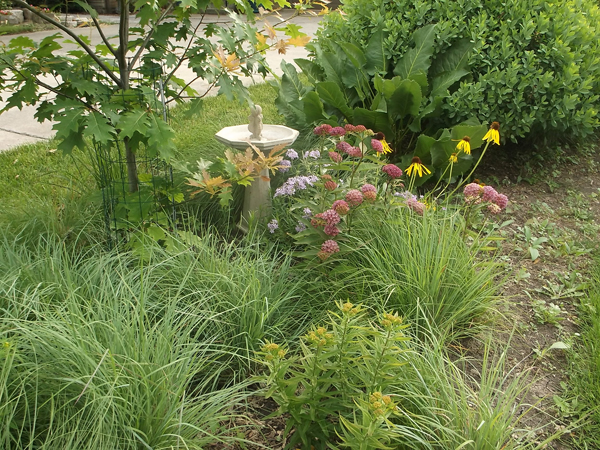
Little Bluestem grass with Wildlflowers
The Little Bluestem grass (Schizacyrium scoparium) in the foreground is showy in its own right, but also is a wonderful foil to the wildflowers in this garden.
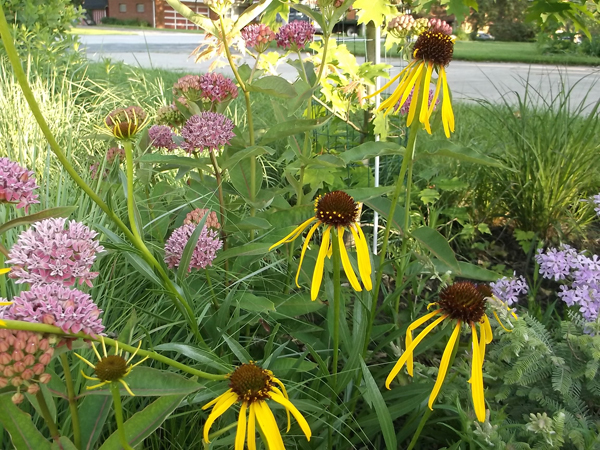
Paradox Coneflower (Echinacea paradoxa)
The 3 foot tall, yellow, Paradox Coneflower, mixes well with other flowers and grasses because of its tall, wiry growth.
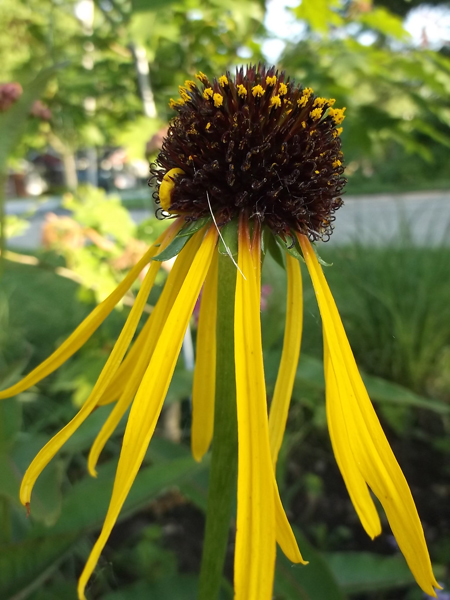
Paradox Coneflower (Echinacea paradoxa)
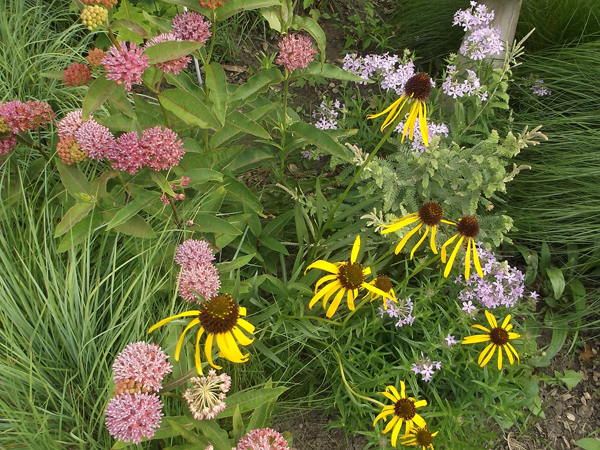
Purple Milkweed (Asclepias purpurascens)
Purple Milkweed, with Paradox Coneflower, and Prairie Phlox make for a cheerful combination in the garden.
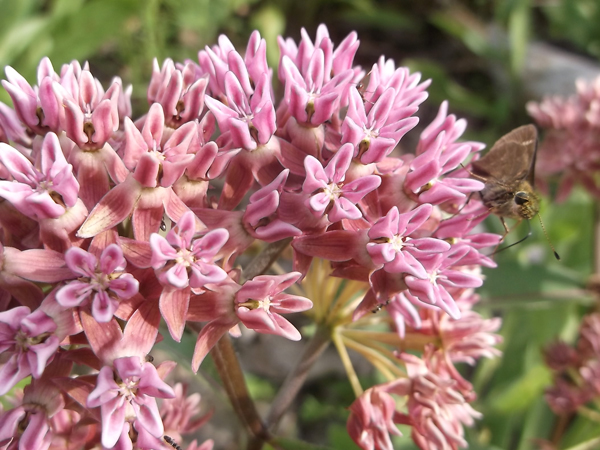
Purple Milkweed (Asclepias purpurascens)
With a little skipper nectaring on the flowers
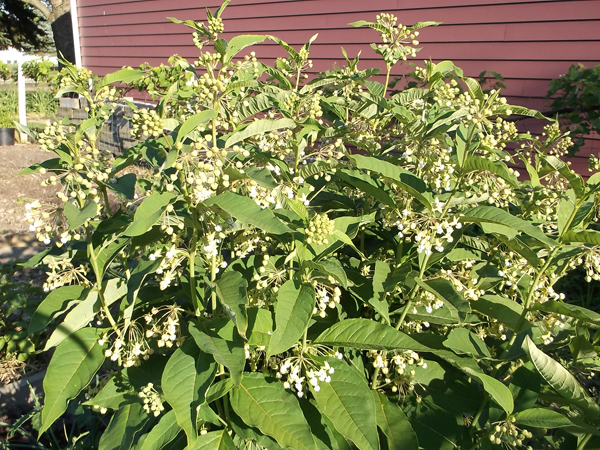
Poke Milkweed (Asclepias exaltata)
Poke Milkweed is not all that common in the wild and it is unusual in that it occurs in woodlands rather than the open prairie - as is more often the case with its brethren. This garden grown plant doesn't seem to mind the full sun exposure.
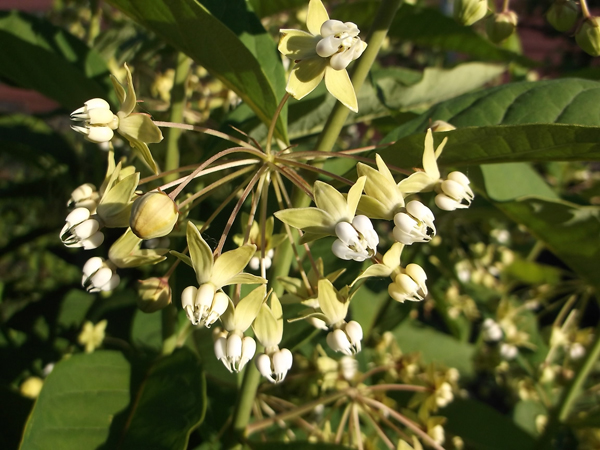
Poke Milkweed (Asclepias exaltata)
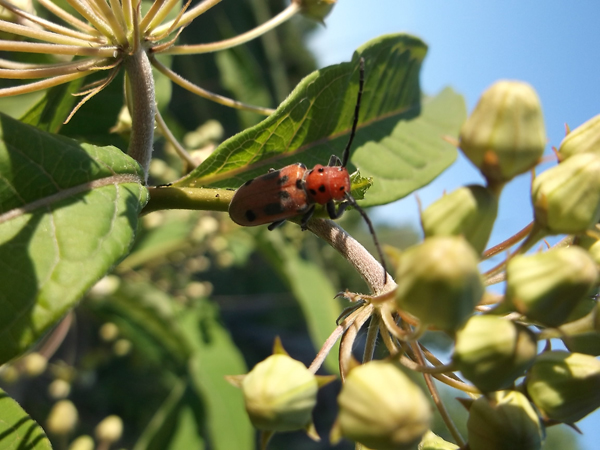
Red Milkweed Beetle (Tetraopes tetrophthalmus)
Both the adult and larvae feed on milkweed. Shown here on Poke Milkweed.
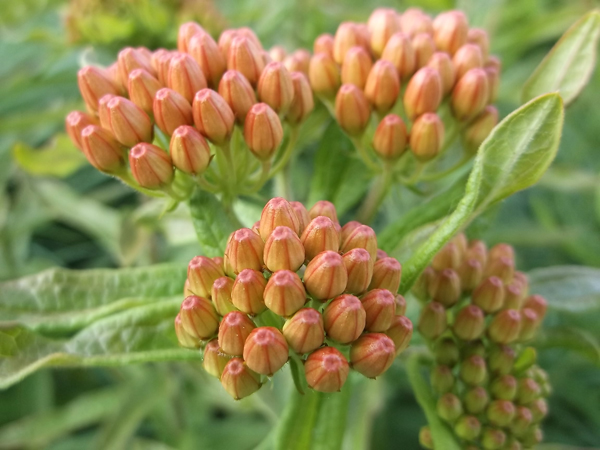
Orange Milkweed (Asclepias tuberosa) in bud
Sometimes referred to as "Butterfly Weed", this plant is welcome and well behaved in any full sun garden.
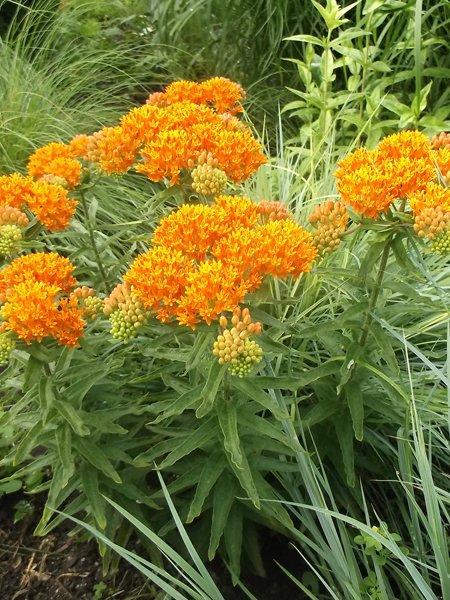
Orange Milkweed (Asclepias tuberosa)
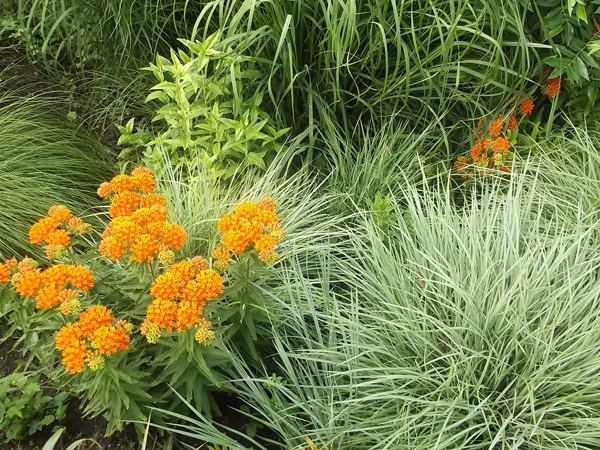
Butterfly Milkweed with Little Bluestem grass
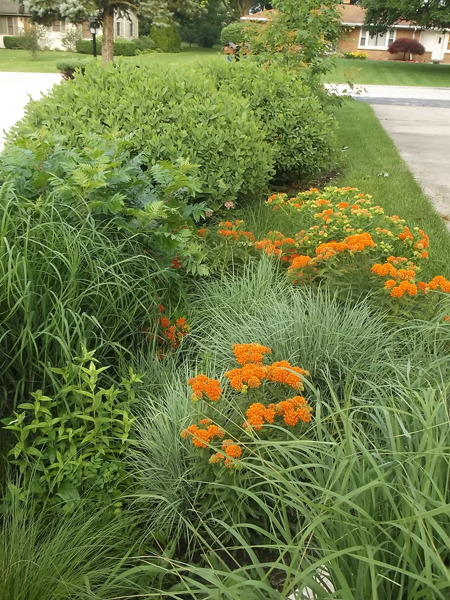
The "Prairie Garden" along the driveway
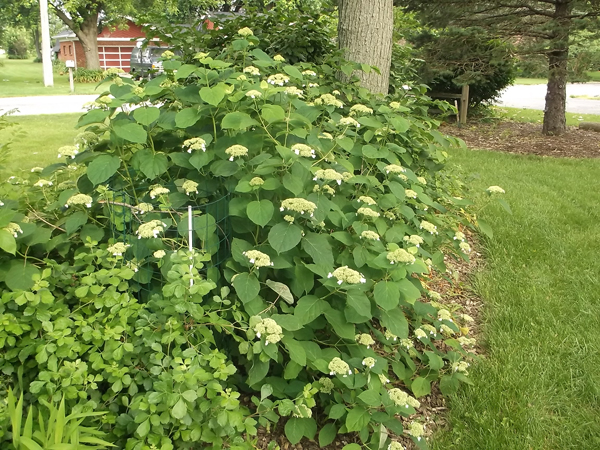
Smooth Hydrangea (hydrangea arborea)
The native form of Smooth Hydrangea is sometime called "Lacecap" Hyddrangea due to the doily-like form of the flowers.
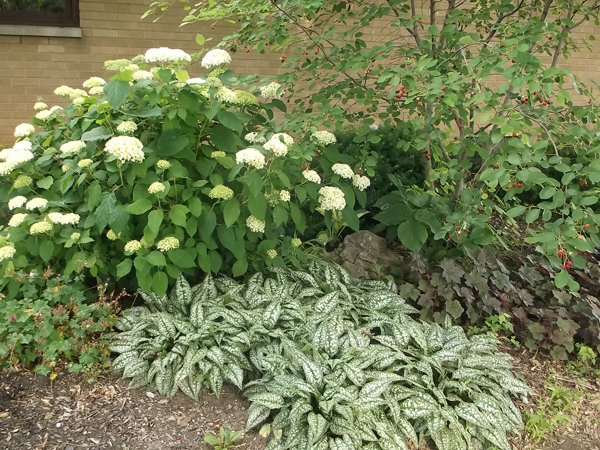
Hydrangea 'Annabelle'
The sterile flowers have nothing to offer insects, but this form of Smooth Hydrangea was found growing in the wild near Anna, Illinois in 1910 - and can be quite stunning in the garden during the months of June and July, even in winter with its dried flower heads still persisting.
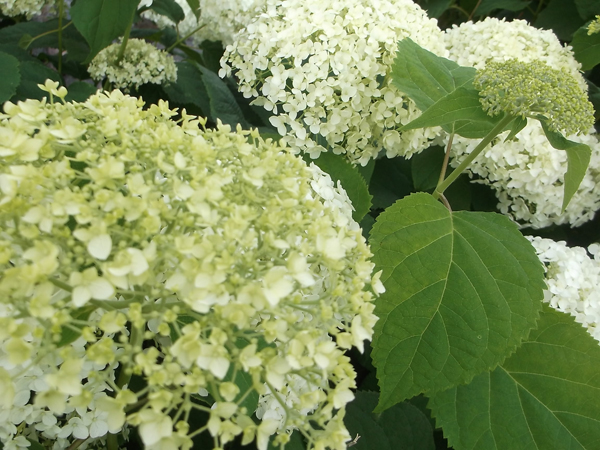
Hydrangea 'Annabelle'
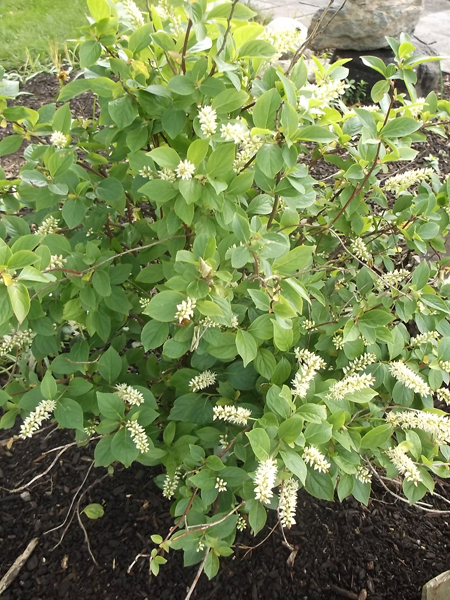
Virginia Sweetspire (Itea virginica)
An east coast native shrub, commonly found in garden centers as 'Little Henry', a two foot tall form of the plant. Burgundy fall color and nice blooms in early summer.
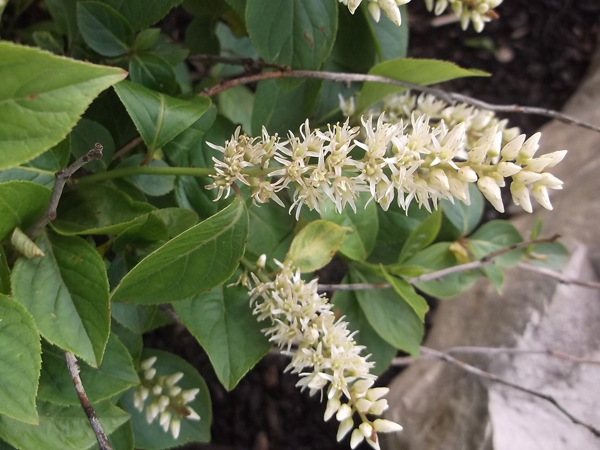
Virginia Sweetspire (Itea virginica)


